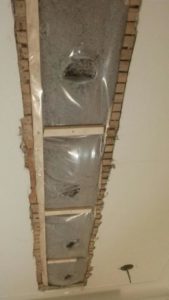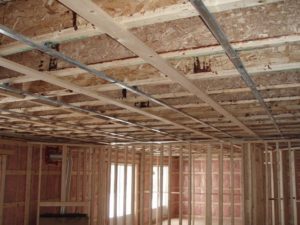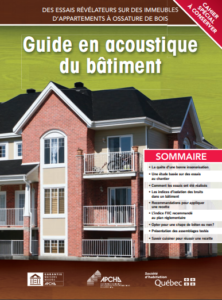Whether you live in a triplex or a single-family home, you may often be bothered by noise coming from upstairs or downstairs or through the walls. From the sound of a chair on a floor to music being played too loudly, annoying noises heard through floors and walls due to poor acoustic insulation can disrupt your peace of mind and, in some cases, become a daily nightmare.
What can you do to control these noises and regain your precious peace and quiet?
You may be surprised to learn that there are some relatively easy ways to improve soundproofing in your house. First, however, some useful definitions.
Sound versus noise: what’s the difference?
Sound is vibrations travelling through the air that can be heard when they reach a person’s or animal’s ear. It is described in terms of its frequency (measured in Hertz) and intensity (measured in decibels).
Noise is any undesirable sound, according to a listener’s subjective perception. It is also measured in decibels. What makes noise distinctive is that it is a sound perceived as bothersome.
Decibel (dB)
This is the unit used to measure the intensity of a sound on a scale. For example, the sound level of an airplane taking off is approximately 130 dB, while that of a whisper is just 20 dB.
Airborne noise
As you have likely guessed, this is indoor or outdoor noise that travels through the air, making the partitions (walls, floors or ceilings) in your home vibrate before finally reaching your ears. It has no direct contact with the building’s structure.
This type of noise includes:
- television (around 70 dB)
- conversation (45-55 dB)
- ringing telephone (around 80 dB)
Sound Transmission Class (STC) is a rating of how well a building’s structural components attenuate airborne noise. The higher the STC of a wall or floor, the more effective its sound deadening properties. The National Building Code prescribes an STC of at least 50 dB, and even greater in some cases.
Impact noise
Impact noise is a structure-borne sound, meaning that it is transmitted through contact with a structural component, and may be individual sounds or a vibration.
This type of noise includes:
- the sound of steps
- a falling object
- slamming a door (around 68 dB)
- heating/ventilation/air conditioning systems
Impact Insulation Class (IIC) is a rating used to indicate how effectively floors and ceilings attenuate impact noises. This rating is also measured in decibels (dB). It should be noted, however, that the National Building Code does not prescribe specific criteria with regard to impact noise.
Check before soundproofing
As mentioned previously, there are some relatively simple ways to enhance the soundproofing of the floors, walls or ceilings in your home. However, before proceeding with any work, be sure to review the following 5 items:
1. What noise do you hear, and where is it coming from?
2. Is it possible to reduce the noise at the source?
3. Can you identify any openings (plumbing, electricity, etc.) in the floor that are letting air through and helping to transmit the sound?
4. Do you have any flush-mounted light fixtures for which multiple holes had to be made in the ceiling to attach them? The sound may be sneaking in through the holes!
5. Do you use draperies to decorate your home’s interior? Do you have carpeting on your floor? Thick rugs and fabrics – like velvet – are excellent soundproofing materials!
Easy soundproofing solutions
- If you have found any cavities in your floor or ceiling, the first step is to fill them in entirely with blown-in cellulose to prevent any sound infiltration.
- For best results, cut a slot approximately 12” wide in the ceiling perpendicular to the joists and have the cellulose blow in (see photo).
- Use of floating floors is also important in order to insulate effectively against impact noise. This involves separating a floor from the joists that support it to help dissipate any sounds. Standard framing otherwise forms a single structure and tends to amplify sounds and vibrations and make noises resonate, for example, into a neighbouring apartment below.
- You can also always arrange for the services of an acoustic consultant (someone specializing in building acoustics), who will provide valuable advice on soundproofing measures you can implement to regain some peace and quiet.

Soundproofing a new home: think before you build!
If you want to enjoy superior soundproofing in your new home, consider using a combination of the following materials based on the degree of soundproofing you require:
- 2 layers of type X 5/8” gypsum board
- 16” c/c resilient bars
- Polyethylene
- Full-cavity blown-in cellulose
- Trusses
- ¾” OSB
- Absorbing panels or membrane
- 1½” concrete topping
- 1/8” Ethafoam sheets
- 5/16” laminate wood flooring
Through the CALI System, partitions are suspended from a building’s framework using resilient metal channels to enhance the sound deadening properties of the ceilings. And to improve soundproofing in your home even more, you can always have cellulose blown into your walls!

Do you want to learn more about best practices in residential soundproofing? Consult the APCHQ’s guide to building acoustics (available in French only) by clicking the image below or call us toll-free at 1-888-962-5328.

This article was originally published on January 17, 2017 by Marcel Lapierre





